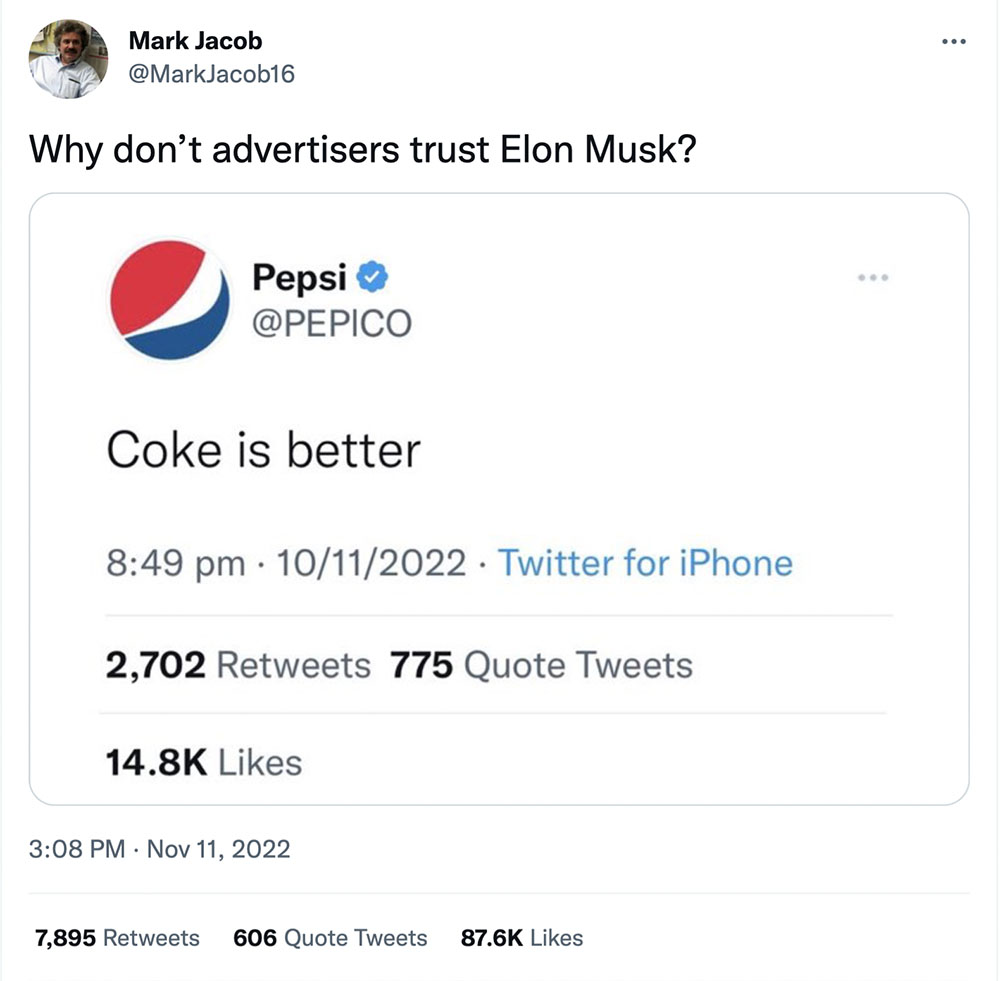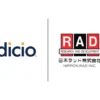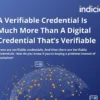Twitter already showed how misinformation moves fast; but botched identity shows that “verified” misinformation can move even faster
By James Schulte
With his acquisition of Twitter, Elon Musk has set about to make sweeping changes, one sure to be analyzed in business school case studies for years to come
Until now, a Twitter blue check was, for many, a status symbol reserved for those with high numbers of followers, celebrity, or organizational status; it was something to be achieved. More importantly, it also served as a way for users to know for certain that a tweet truly originated from the high-profile person purported to be behind the account. It was designed to protect the reputation of individuals and organizations and made it easier for users to parse through the never-ending flow of opinions and updates of hundreds of millions of users and organizations each day. But it was reserved for the few. Musk wanted to democratize verification through charging for a blue check.
“You too can have the long sought-after blue checkmark for just $8” Sure, ok.
“Eliminate the bots and spam!” Sounds great.
“Cut down on fake news?” Yes, please.
Then it was launched.
But what, exactly? It was not clear that verification was being performed at all—or it was being done in a way to make a mockery of the process. Some were quick to take advantage of the situation. By simply changing their Twitter handle, tweaking their profile name, and paying $8 for “verification,” they could easily impersonate other people or companies. Now you could be anyone you wanted to be AND have it officially verified by Twitter — a perfect storm for an online identity crisis.
For business, the result was a nightmare:

Incredibly, fake accounts led to billions of dollars in lost market cap:

Twitter’s largest source of revenue has, historically, come from large companies looking to reach a large audience. But now, some companies are questioning their presence on the platform, viewing it as a liability to their brand. Some major advertisers have paused paid ads, including General Motors, United Airlines, General Mills, and Audi.
By the end of the week, the new verification scheme had been paused. Some 140K users had signed up for the $8 “verification.” This is the equivalent of $13.4M ARR— or an amount easily obtainable from the ad spend of a single advertiser. In addition to being a small amount of revenue, this low-quality verification scheme has likely cost Twitter itself billions of dollars.
How should Twitter solve its verification problem?
Part of Twitter’s problem with verification is that it doesn’t have good resources to lean on when it comes to verifying every company, government, and person; it becomes the sole arbiter of impersonation attempts. Pre-Musk Twitter solved this problem by limiting verification to those invited — this allowed it to limit the amount of leg work required while avoiding the combinatorial effect of ‘open’ registration. Musk’s attempt was, perhaps, noble, but naive to the difficulties of actually proving identity.
The solution is portable trust enabled with verifiable data. This approach avoids the logistical, technical, and regulatory issues with database and API integrations. Data is cryptographically signed, which allows it to be verified when it’s presented. The data can move with the subject, rather than rely on direct contact with the authority.
All kinds of data can be made into a verifiable credential. Business registrations, proof of employment, drivers licenses, anything.
So how does this help Twitter?
Imagine an ecosystem where a variety of credentials are available to both businesses and individuals. During registration, credentials may be presented to Twitter. Twitter can verify both the cryptographic signatures and the validity of the issuer, and use that verified information to make decisions about the names being registered. This is a vast improvement over today’s ad-hoc verification process of manually chasing down information from a wide variety of sources.
Before you ask, we are not going to claim that the product we sell will solve Elon’s problem in 15 seconds or less. What we do have is experience with the open-source decentralized identity technology that begins to solve the underlying problems with verifying data and identity online — and which will make Twitter’s verification challenge a much easier task.
Indicio has experience working with verifiable credentials and the open-source projects that support their issuance and verification. We have a packaged offering called Indicio Proven™ that offers commercial support for those that don’t want to use the open source project directly. This allows the issuance and verification of credentials and functions as an important part or a start of a credential ecosystem.
With an active ecosystem of credential issuers, verification procedures for Twitter (or anyone else with a verification problem) become fast and efficient — and much more resilient to impersonation attempts and other issues that can cause the havoc we are observing now.
We can also offer design consulting or assistance for any circumstance. Give us a call!






